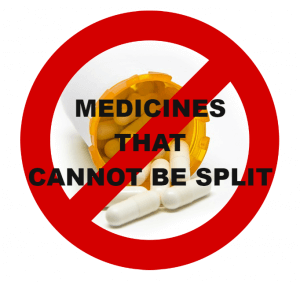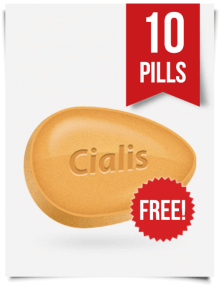Splitting Pills: a Safe Way to Cut Costs
It is a common practice among patients to split tablets, which has been accepted for many years. It may seem an economically attractive way of consuming drugs. On the other hand, halving tablets may cause considerable problems either related to drug formulation or the patient.
The way that prescribed medicines should be administered is a crucial point which should be discussed between a doctor and his patient. The way that prescribed medicines should be administered is a crucial point which should be discussed between a doctor and his patient. This emphasis should be made to avoid any medication errors.
The following tips may help you to be more careful in correct and safe medicine intake.
Splitting Tabs – Saving Money
There are a variety of reasons why people split tablets. Probably, the following situations may be familiar to you:
- the tablet’s size is too big for swallowing. You break a pill in half to avoid choking;
- the prescribed drug dosage is not standard. Your therapist advises taking one pill and a half of another;
- the prescribed dose is not available in a cost-effective equivalent. Your therapist prescribes pills with a higher strength, which can be split.
Most pharmaceutical companies pursue flat pricing policy and manufacture drugs at the same cost regardless of dosage, so that tablets with a higher strength can be split into two doses for the price of one. It is a good variant to keep health care costs down because of financial constraints. By buying tablets in a double dosage, you get a double medicine supply, for example, a 90-day stock will last for six months.
However, pill splitting has certain downsides that should be highlighted.
Which Pills Can Be Split?
Before you consider cutting pills, ask your health care provider or pharmacist if it is safe. Firstly, check the package insert. If the pills are approved for cutting in half by the Food and Drug Administration (FDA), it should be mentioned in a leaflet. Scored pills can be easily cut evenly, but not all tablets with a line down the middle are safe to split. Ask for your doctor’s approval.
Sometimes uneven tablet splitting results in significant dose fluctuations. It is vitally important in cases with drugs, which have a narrow therapeutic range. Such dose variations are not very significant for medicines with a wide therapeutic range or those with long half-lives.
As mentioned above, scored tablets are considered by manufacturers as drugs that are suitable for splitting and have a certain mark which indicates the appropriate place. For example, agents for high cholesterol (Lipitor, Crestor, etc.), antidepressants (Zoloft, Paxil, etc.), ace-inhibitors (Prinvil, Monopril, etc.), and angiotensin receptor blocks (Cozaar, Avapro, etc.) are medications that can be split. However, drugs may be inaccurately divided because of irregular tablet shape, size, or type of scoring. For example, even scored pills may not split into two equal pieces. Besides, patients should consider the time when a pill remains stable after division. Some tablets may be exposed to air only for a short time period (less than 24 hours), so pre-cut doses may become ineffective.
Pills can be split into two pieces manually either by breaking them with your fingers, cutting with a knife/scissors, or using a special tablet cutter. The Pilomat device is specially designed to increase the accuracy of pill splitting, because regular breaking leads to pill wastage or dosage inaccuracy. This device is not electric and has a 4 way cutter blade, so its cutter quarters divide a tablet into 2 or 4 fragments. However, irregularly shaped pills are difficult to be loaded into a cutter and cut in equal pieces.
The Pilomat device shows lower pill weight deviations than any other DIY splitter. It gives only 9% weight reduction in a cut tablet piece, while kitchen knife gives 13% reduction and manual breaking and scissors – 15%.
Kind of Drugs That Can Be Dangerous to Split
When pills are removed from foil packaging, their active ingredients may undergo degradation if left uncoated. Patients may also get less than the intended tab dose and be subjected to higher risks of side effects caused by degraded products. The absorption properties and dissolution rate may change if drugs are split. The increased initial rate of dissolution of halved tabs may induce unpredictable clinical consequences.

- pills which are unscored (Diaformin, Glucobay, etc.);
- anti-seizure tablets;
- film-coated drugs (Aricept, Nolvadex, etc.);
- chemotherapy medicines;
- oddly shaped or thick pills (Proscar, Midamor, etc.);
- birth control tablets;
- drugs, which are enteric-coated (Voltaren, Somac, Nexium, etc.);
- medicines which can irritate one’s mouth or teeth;
- blood thinners (Warfarin, Coumadin, etc.);
- pills for sublingual administration (Viagra Soft, etc.);
- combination tablets, which comprise two or more medications (as amlodipine and atorvastatin in Caduet);
- extended-release drugs (Tramal SR, Agon SR, etc.).
Capsules are not intended for splitting as well, because they contain gel or powder which shouldn’t come out earlier than when the pill coating dissolves. Time-release tablets are specially formulated to act slowly, so splitting will affect this capability. Very small pills are also difficult to cut evenly.
Other Potential Problems
Even if the instruction permits you to cut your tablets, it bears certain problems which can put patient’s health at risk. There is a very narrow margin between a tablet serving that has a therapeutic effect, and one which is ineffective or toxic.
Some tablets can turn to powder during division, and crumbs are difficult to divide into equal portions. Aged patients or people with unsteady/weak hands (because of Parkinson’s disease or arthritis) or impaired vision can hardly cut their pills properly. Cognitive malfunction makes it difficult to remember instructions on tablet splitting, especially when several pills have to be cut.
The proper storage of split drugs is another sad story. They are usually kept in bottles which previously contained the same or different medication or some other substance. The labelling of such containers and the time that split parts are exposed to light, moisture, and air also arise issues of concern. For example, split fragments of soluble aspirin have an unstable usefulness, so the other unused half should be discarded at the same time.
Should You Split Medications
If you opt for splitting pills for some reason, follow simple rules to make the procedure safer. First of all, consult your physician or pharmacist if certain tablets can be divided. Use a special cutting device to have an accurate cut portion. Do not split the whole supply of pills you have at once in order to avoid reducing their effectiveness. Do it only in case of need. Ask your doctor if the medication in the required dosage that you consume is available in a liquid form to avoid splitting coated pills.
Consider all do’s and don’ts before tablet division. Any savings you get from pill splitting can be offset by medicine wastage or potential dangerous side effects.


 Free Viagra Samples 10 x 100mg
Free Viagra Samples 10 x 100mg Free Levitra Samples 10 x 20mg
Free Levitra Samples 10 x 20mg Free Cialis Samples 10 x 20mg Online
Free Cialis Samples 10 x 20mg Online

